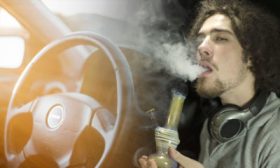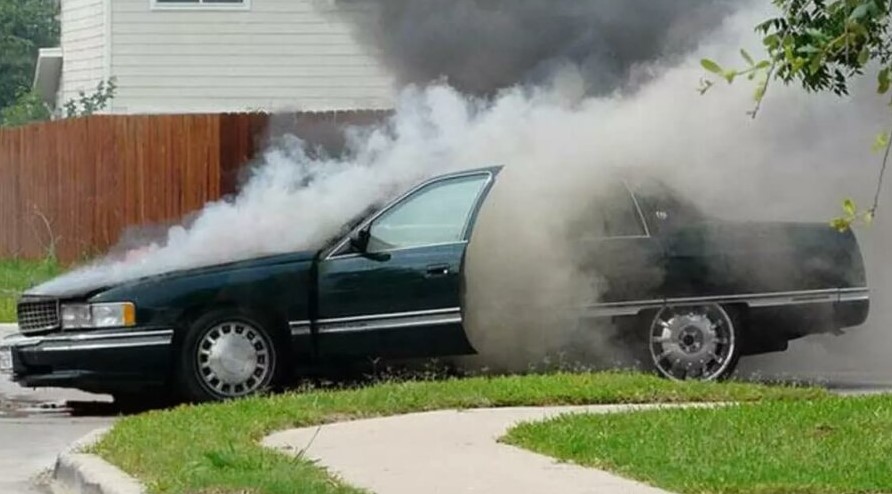Uncategorized
What is Hotboxing With Cannabis And Does It Work?
Whether you’ve done it or not, you’ve undoubtedly heard the term “hotboxing” before. Cheech and Chong popularized the practice of filling a tiny enclosed space with smoke, which has now become a custom for cannabis users.
What is hotboxing?
As the name suggests, hotboxing involves smoking cannabis in a confined space so that the area fills with smoke. People usually stuff several people into a car, tent, or small room and block off all areas where air could flow in, like cracks under doors and vents on the dashboard. As joints are passed around and hit frequently, more and more smoke starts to fill up the space. Some claim that you don’t even have to hit a joint to get high when hotboxing; they say that the sheer density of the cloud can act as a standalone source of THC.
Hotboxing may seem like a modern innovation, but it has been around for millennia. Following funeral customs observed by the Greek historian Herodotus, the Scythians—a nomadic tribe of warriors—hotboxed in tent-like structures; far more macabrely than just getting high with buddies.
The following article will teach you everything there is to know about hotboxing, including how it works, how to do it, and the risks involved.
The classic way to hotbox is by using a car, but you can also do it in the following places:
- tent
- closet
- shed
- attic
- basement
- any other room that can be sealed from airflow
Hotboxing is a powerful high that is not recommended for novices. According to popular thinking, hotboxing will raise the power of the THC and result in a more powerful high as there is less ventilation.

Will hotboxing get you high?
Yes, hotboxing cannabis will get you high.
Researchers are still undecided as to whether hotboxing will enable you to get higher than simply smoking. Some people claim that hotboxing gives a “double dose” of THC because the joint (or blunt or bong) and residual THC in the smoke in the air, but is this enough to make you high?
The lack of air is the key aspect of hotboxing. After a hotboxing session, you will feel much higher than usual, but it’s due mostly to carbon monoxide (CO) and carbon dioxide (CO2), not just THC.
If fresh air is not able to flow, the amount of oxygen in the air decreases, and the number of smoke particles increases. These higher levels of byproducts cause CO and CO2 build-up in your body, which may produce a feeling similar to being stoned but without the euphoria or disorientation. It’s simple to see why hotboxing makes you feel high when you combine this sensation with THC’s psychoactivity.
Does hotboxing work without smoking?
The unpleasant consequences of hotboxing with cannabis don’t only fall on the person smoking. In recent years, THC has become more potent, so you don’t even have to smoke weed to get high from hotboxing.
Being in the presence of individuals smoking marijuana will have little or no effect on non-smokers. However, a hotbox creates an atmosphere where the air’s composition is altered by the smoke and exhalation, which can cause nonsmokers to high. Even nonsmokers can get high because of the lack of oxygen and retention of smoke in a hotbox.
In a study released in May 2015, researchers found that 12 nonsmokers were placed in a room with six smokers. Each smoker was given ten joints and instructed to smoke as much as they wanted. THC was subsequently detected in the nonsmokers’ urine after the experiment was finished.
In one session, the room’s atmosphere was allowed to flow freely, and the nonsmokers didn’t test positive for marijuana in their bodies. However, in the next session, the space was closed to create a hotbox. Each of the non smokers reported feeling high and having THC levels in their blood and urine that were detectable after that session.
That’s true, just being in a hotbox made even non-smokers high enough to fail a drug test. While breathing in secondhand smoke isn’t always sufficient to make you high, when you’re in a poorly ventilated space, it can.

When should you hotbox?
It’s crucial to exercise caution when it comes to hotboxing since there are distinct phases for lighting up. Here are some things to think about before you do it:
- Hotboxing isn’t discreet. When you hotbox, the potent smell of cannabis will fill the room or car, and anyone nearby will be able to tell what you’re doing. Hotboxing a car can be easily remedied by rolling down the windows, but if you hotbox somewhere like a closet, the smell will linger for weeks.
- Hotboxing is a group activity that requires a bit of planning. It takes a lot of marijuana to make enough smoke for a hotbox, and one joint alone will not do the job. If you’re looking to hotbox,you’ll need at least a couple of companions (ideally with their own marijuana).
- Don’t hotbox if you have anything else to do in a day. Because you’ll be hitting multiple joints at the same, plan your timetable accordingly.
Is hotboxing dangerous?
Although not always more hazardous than smoking, you must take a few measures when you hotbox.
- Never hotbox a moving car. Not only can smoking while driving reduce visibility and impair the driver, but it can also lead to dangerous conditions that could cause an accident.
- Ensure you’re in a safe location. If you’re hotboxing a car, don’t park it in a public location where children are playing. If you’re hotboxing a room, make sure the lingering odor isn’t an issue. It should also go without saying that never hotbox in someone else’s home or vehicle without their express permission (or involvement).
Is hotboxing bad for you?
While hotboxing, airflow is restricted, and because there is significant and long exposure to the chemicals in cannabis smoke while this occurs, oxygen levels may drop and CO2 levels rise – but this won’t typically be an issue for a seasoned smoker.
Cannabis smoke contains carbon monoxide and carbon dioxide, which can reduce blood oxygen levels in certain circumstances. Changes in blood oxygen levels are possible because of a buildup of carbon monoxide and carbon dioxide in the blood. Low oxygen (hypoxia) can cause long-term health problems such as cognitive impairment and lung disease. Still, it takes a long time for exposure to smoke to induce hypoxia, and there are no relevant studies demonstrating that cannabis has a big impact on oxygen levels in the blood.
Although hotboxing has never been studied, be sure to get some fresh air if you start feeling lightheaded. Also, keep in mind that people with existing heart or lung problems are more susceptible to issues.

Can hotboxing a car get you in legal trouble?
Hotboxing is a complex legal issue. While there are no laws prohibiting hotboxing in every state, you could face various fines depending on your location.
If you’re the one in the driver’s seat, you may be charged with DUI for hotboxing. The vehicle doesn’t have to be running and you don’t need to be going anywhere – simply sitting in the driver’s seat under the influence might be enough to trigger a DUI citation in most states. You could face additional drug and paraphernalia possession charges if cannabis is not legal in your state.
Depending on the state, there are different laws regarding where you’re allowed to smoke cannabis. For example, in New York and California, it is illegal to smoke in a car– even if you’re the only person inside of it. So if the cops were to show up, you could still get into trouble.
Hotboxing room is a whole different story. If you do it in your own house, chances are you won’t get charged with anything (unless you live in a state where cannabis is illegal and have really nosy neighbors.) However, if hotbox is on someone else’s property – you could face charges or fines.
Bottom line
Many cannabis users enjoy hotboxing as a time-honored hobby and a lot of fun. You and your friends may have a great time and a unforgettable experience with some planning and discretion. However, even those who do not smoke might get high from hotboxing, and local laws and restrictions may affect where you are allowed to hotbox.



